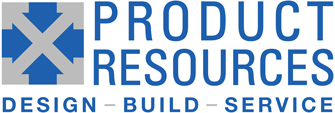QUICK ACCESS TO OUR SERVICE PAGES
Product Development
Product Design
Prototype Development
Pre-Manufacturing
Design for Manufacturing (DFM)
Manufacturing Documentation
Pilot Production
Regulatory Compliance
Manufacturing
Supply Chain Management
Product Assembly
Product Testing & Calibration
Post-Manufacturing
Product Delivery
Product Support
Sustaining Engineering
Planning a Project?
Let's see if there is a fit
How to Assess your Manufacturing Risk – with FMEA
“What could go wrong?”
That is the central question every manufacturing team must ask before a finished design goes into production?
The fact is every product comes with risk. This includes how the product is designed, how the product is built, and how the product is used.
The outcome of these risks vary from annoying your users to harming them. A casual examination might uncover a significant flaw, or it might not. If your casual examination misses something significant, the consequences could be catastrophic for the products users, and for the company that is marketing the product.
How do you know what could go wrong, and what might be the consequences?
One way to find out is to conduct an FMEA.
FMEA stands for Failure Mode and Effects Analysis. And FMEA is a systemic way of searching through the product, identifying anything that might fail to function as required, and evaluating the effects of that failure on whomever is interacting with the product.
The FMEA is performed by everyone involved in the product’s development.
When you conduct an FMEA, you start with the assumption that failures will happen. Then you ask:
- What are the potential Effects of the failure? What will happen, and to whom?
- What is the Severity of the failure? From cosmetic damage to injury of users.
- How Likely is the failure to occur? From highly improbable to very likely.
- What is the Detectability of the failure? What are the chances that you find the problem before the effects occur?
- What have you already done to mitigate the problem? What are the current design features, process controls or warnings that the current evaluation is based upon?
Different types of FMEAs
FMEAs are used to assess risk with various aspects of the product development and manufacturing process.
- The Application FMEA examines the risk related to how the product will be used – and are typically conducted by the company’s marketing team.
- The Design FMEA looks at the product design itself and tries to identify potential failures in every element of that design.
- The Process FMEA analyzes the manufacturing process, and the risks related to every step in that process – from the supply chain to assembly and testing to packaging and product support.
Here at Product Resources, we routinely conduct both Design and Process FMEAs.
‘You can pay me now or pay me later’
Back in the early 1970s, FRAM oil filters ran a TV commercial with the slogan, “You can pay me or pay me later.” It was a warning to automobile owners to replace their oil filters (now) or run the risk of an expensive engine replacement (later).
That same message could be applied to FMEA.
The FMEA is going to happen. Your choice is between performing your own FMEA in a conference room with your engineering team before the product is released or waiting for your customers to do it in the field. Which one do you think will be less expensive? We think it’s the one that does not involve a Product Recall.
Outside of medical devices, products used in explosive atmospheres, aviation, or other similar risk-prone uses, an FMEA isn’t required, but we tend to recommend them.
Finding that level of acceptable risk
Risks of injury to customers, users, service technicians, etc., can be an obvious risk that must be eliminated. Other risks can be less certain. Throughout the FMEA process, your team will find that the FMEA prioritizes those risks that are most severe, occur more often, and are hard to detect. There will be other risks that are much less severe, rarer, and easier to spot; they might be considered an acceptable level of risk. These are risks that could result in annoyance instead of injury.
This is where the product development team will need to make some judgements as to whether the mitigation costs are worth the effort. Extreme risks obviously need mitigation. Slight risks can probably be safely ignored – no harm, maybe just a warranty claim.
Where do you draw the line?
The need for reasonableness
With enough imagination, you could probably come up with countless scenarios where your product faces some level of risk.
Some of those scenarios will be farfetched and unlikely to happen.
For this reason, you need to establish some level of reasonableness, and this can be determined early on by the team leader.
The Risk Priority Number (RPN)
But some of scenarios will be close calls – and, for that, we have a Risk Priority Number, or RPN.
The RPN is used to calculate the risk along three factors:
- Severity – how severe will the outcome be with the failure?
- Occurrence – how often or frequently will this failure occur?
- Detectability – how likely are we to detect the failure?
Each of these three factors are ranked on a scale of 1-10, then multiplied together to create an RPM.
No project is without risk. But there is such a thing as an acceptable level of risk, and the RPM will help you establish that level for each project.
PFMEA and the supply chain
Managing complex products, especially medical devices, require FMEAs early in the process to catch many of the early risks before design changes become too disruptive.
Very often as products are designed and prototypes developed, the design team will rely on whatever parts are easily accessible.
This may include ordering individual parts online from companies like Amazon.
While these parts may work just fine for a prototype, selecting these parts for manufacturing could add significant risk.
The Process FMEA starts with the procurement process when parts are specified and when suppliers are identified and qualified. Reducing supply chain risk is both good for product safety and also eliminating risk to the production schedule.
FMEA and regulatory expectations
Medical devices and other risky, highly regulated products are required to have an FMEA or some similar due diligence process.
When you develop a Process FMEA, it should be viewed as a starting point for your manufacturing process. It’s not something you do once and consider it done.
It’s a working document.
Too often, as you go through the Manufacturing process, you will discover new risks that were not identified earlier. And so, you need to update your PFMEA throughout the process.
The Critical Components List
Many times, a new product has received regulatory approval for design, but that approval is contingent in your use of the Critical Components List that was specified in the design and then listed in the Regulatory report. If you read a report from TUV or UL, there will be a statement which requires the use of the components on the Critical Component List.
This needs to be documented as part of the FMEA, if for no other reason than to develop a plan for the obsolescence of the parts on the Critical Component List. The risk for these components has just been elevated!
FMEA – How it all works
The FMEA process isn’t a long process, but it does require participation by multiple stakeholders in the project.
Participants might include representatives from marketing, engineering, manufacturing, testing, quality and operations – all with a different angle on the project.
The commitment of time will vary depending on the type, size and complexity of the product, as well as the seriousness of the product. Medical devices, for example, can take weeks to complete the first pass while simpler, less regulated products might take only a a day or two.
Time can be managed effectively by a coordinator who needs to establish some standards and guidelines for the FMEA process.
Get your FMEA Templates. They’re FREE.
We’ve prepared templates for you to use for Design FMEA, Application FMEA and Process FMEA. Click on the button below to access these FREE templates.


